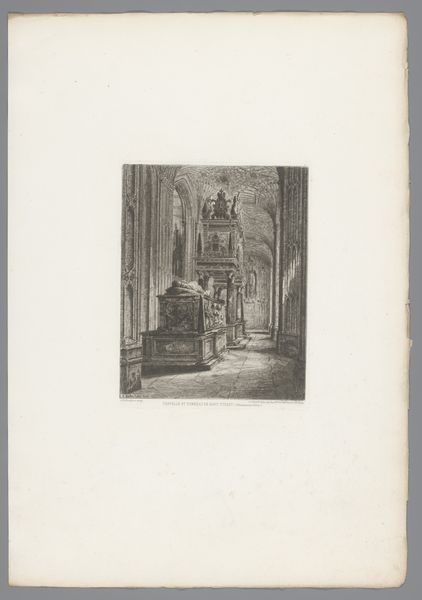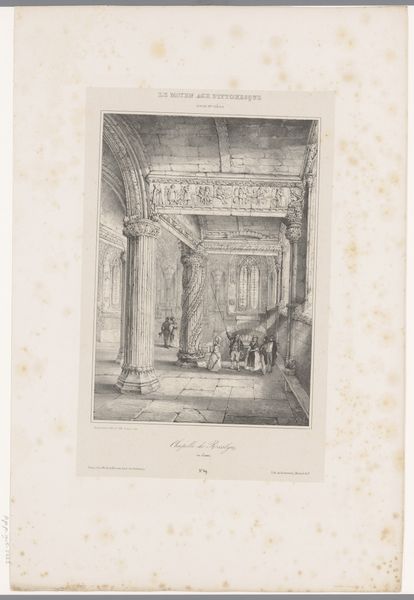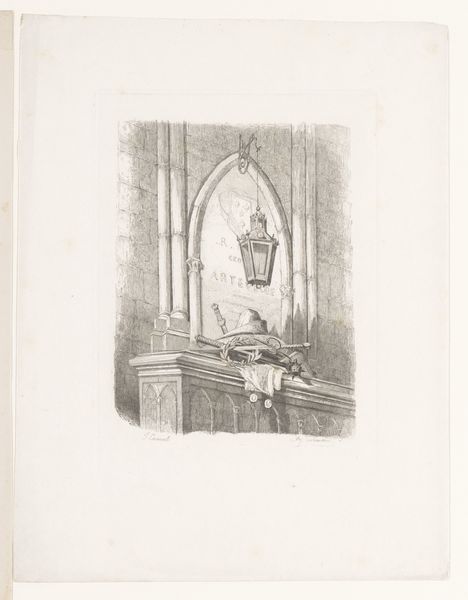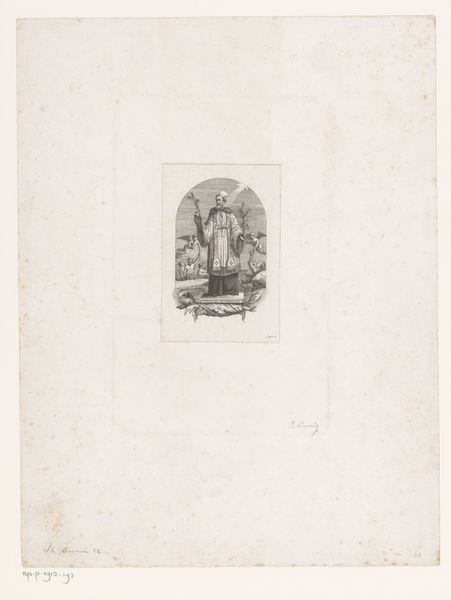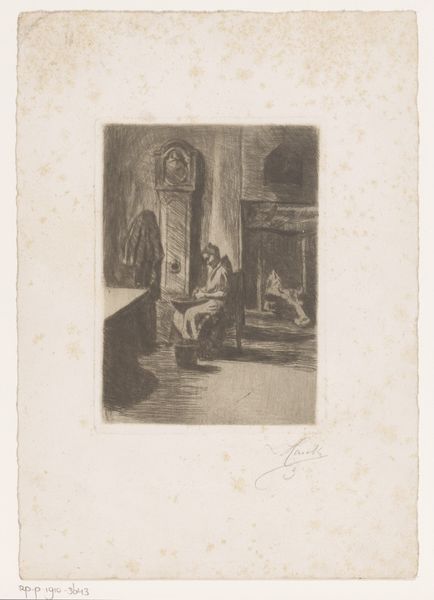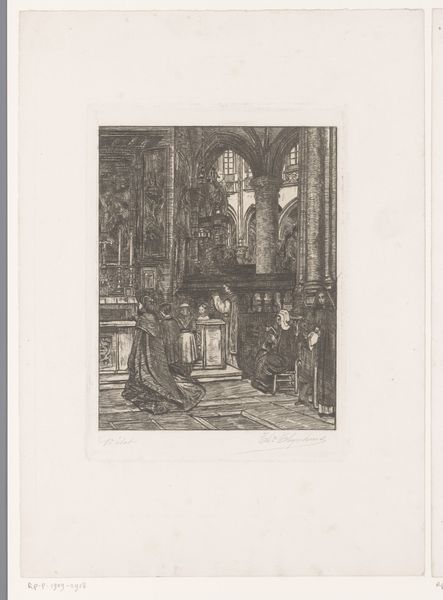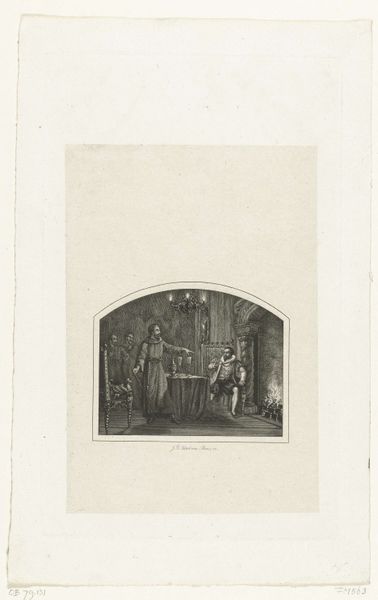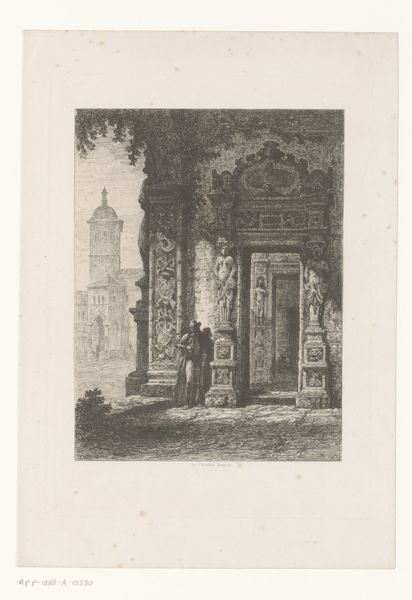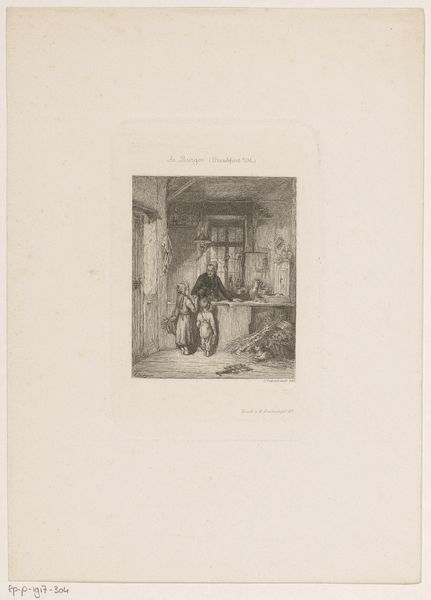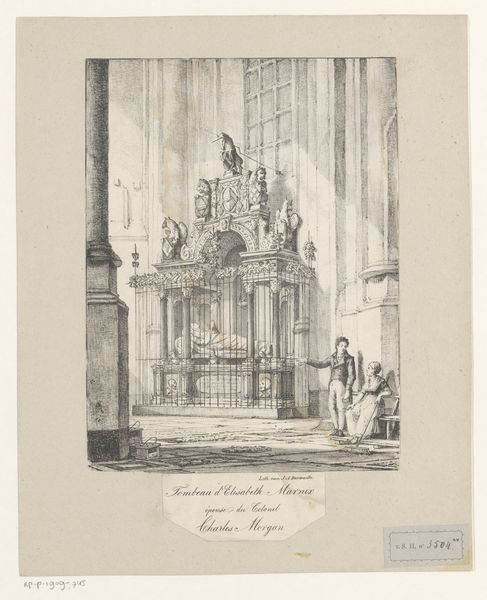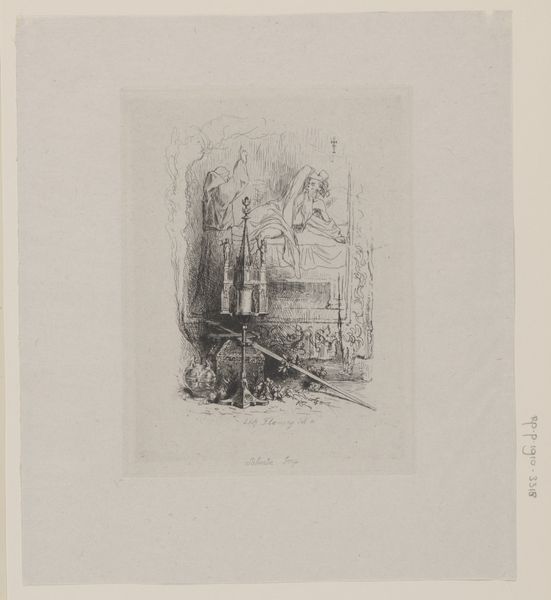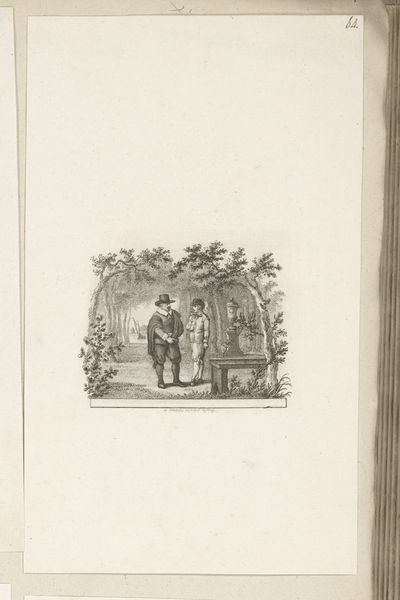
drawing, pencil, graphite
#
drawing
#
medieval
#
narrative-art
#
pencil sketch
#
pencil
#
graphite
#
cityscape
#
history-painting
#
academic-art
Dimensions: height 250 mm, width 197 mm
Copyright: Rijks Museum: Open Domain
Curator: Immediately, I feel a kind of somber weight lifting off me as I look at this; the lighting gives it a transcendent aura, as though rendered from a collective dream. Editor: A dream etched in graphite, perhaps? What we have here is "Graftombe van Godfried van Bouillon" (Tomb of Godfrey of Bouillon), a drawing done in the academic style with graphite and pencil by Auguste Numans between 1833 and 1879. Look at the meticulous detailing on what appears to be the tomb, its effigy adorned with a crown and scepter laid aside in memorial. Curator: "Dream etched in graphite," I love that. But looking at it more…there’s a coolness, almost detached. The distant figures up top could just be statues; are we really supposed to *feel* anything? Maybe that's just me and my tendency for emotional theatrics. Editor: Well, the coolness might stem from its reproduction. This pencil drawing seems intended as part of a much grander memorial scheme, evidenced in Numans attention to details like masonry lines, architectural accuracy, and use of readily available and fairly cheap medium of pencil in comparison to painting or sculpture during his time. This medium could have been an inexpensive method of circulating an image of an imposing tribute through different audiences. Curator: That's true! It's a preliminary thought, in a sense—stillborn to its own monumentality. It reminds me of pale sunlight filtered through gothic stained glass, hitting worn stones. There's beauty in that… fleeting, yet permanent on the page. But do you think it accurately reflects the intended grandeur of this historical figure? I can't help feeling a bit underwhelmed considering we are talking about the Crusader Godfrey of Bouillon, here. Editor: Considering paper stock production from pulp was well underway during this drawing's creation, such reproductions could serve as portable reliquaries, objects that allow us not only contemplate this figure, but understand him materially through widely disseminated images crafted by modest resources readily available. Curator: A fitting tribute—reductive yet accessible! What you highlighted provides the final shade to give it shape: an epic life brought down to everyday materiality. Thank you! Editor: Indeed; its physical composition adds more layers than originally met by aesthetic appraisal. We can leave pondering how these production elements change our viewing experience today versus contemporary audiences then.
Comments
No comments
Be the first to comment and join the conversation on the ultimate creative platform.
